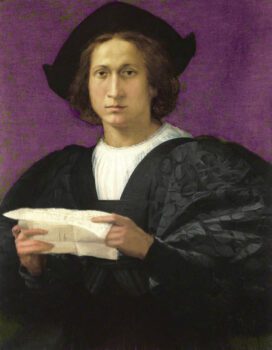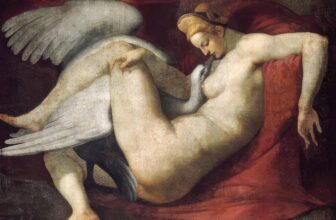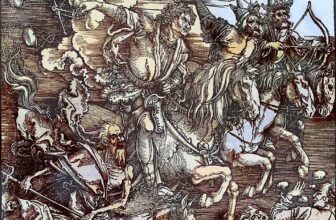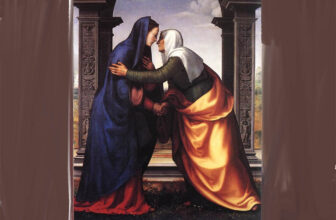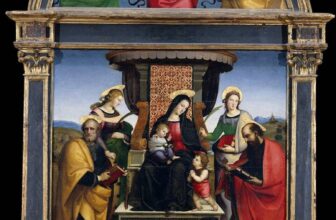Rosso Fiorentino’s Most Famous Paintings
A Flame in the Renaissance
In the early decades of the 16th century, the art world of Florence was ablaze with talent. Leonardo da Vinci’s scientific perfectionism, Michelangelo’s heroic forms, and Raphael’s harmonious elegance dominated the cultural atmosphere. But in the midst of this polished Renaissance ideal, there emerged an artist whose work felt raw, intense, and startlingly modern , Giovanni Battista di Jacopo, better known as Rosso Fiorentino (“the Red Florentine,” named for his distinctive red hair).
Born in Florence in 1494, Rosso was not content to follow the gentle grace of High Renaissance classicism. Instead, he distorted forms, played with dissonant colors, and injected psychological tension into religious and mythological scenes. His paintings often feel like they are caught mid-drama , as if the figures are frozen in a moment of intense emotion.
This restless energy made Rosso one of the defining figures of Mannerism, the movement that bridged the idealized perfection of the High Renaissance and the more stylized, expressive tendencies of the later 16th century.
The Story of Rosso Fiorentino
Rosso’s life story reads like a Renaissance adventure , brilliant triumphs, bitter rivalries, international journeys, and a mysterious death.
Florence and Early Training
Rosso trained in the Florentine workshop of Andrea del Sarto, alongside fellow pupil Jacopo Pontormo. While Pontormo often embraced softer, pastel tones, Rosso took the opposite path , sharp contrasts, acidic colors, and elongated figures. Even as a young man, he refused to be bound by traditional beauty.
One of his earliest known works, The Marriage of the Virgin (1523), already shows his departure from harmonious Renaissance balance. Figures seem to lean and stretch unnaturally, their expressions filled with anxious energy.
The Rome Years , Triumph and Tragedy
In 1524, Rosso traveled to Rome, the artistic capital of Italy, where he encountered Raphael’s grand frescoes and Michelangelo’s Sistine Chapel ceiling. Inspired but unwilling to imitate, he produced works that shocked patrons with their unusual emotional power.
But disaster struck in 1527, when the Sack of Rome by imperial troops devastated the city. Rosso barely escaped with his life, losing many commissions and possessions. This catastrophe forced him into exile and set him wandering through Italy.
France and the Royal Court
By 1530, Rosso’s fortunes revived when he entered the service of King Francis I of France at the Château de Fontainebleau. Here, Rosso became one of the leading artists of the First School of Fontainebleau, blending Italian Mannerism with French elegance. He designed large decorative schemes, allegorical paintings, and elaborate stucco work that influenced French art for generations.
His French period brought him fame and security , but also court intrigues. In 1540, he died suddenly under mysterious circumstances. Some accounts suggest he took his own life after being accused of conspiracy; others believe he may have been poisoned. The truth remains lost to history.
Rosso Fiorentino’s Most Famous Paintings
Although Rosso’s output was not as large as some contemporaries, his surviving works are celebrated for their daring style and emotional intensity. Here are his most renowned paintings:
1. Deposition from the Cross (1521, Pinacoteca Comunale di Volterra)
Perhaps Rosso’s masterpiece, this altarpiece presents the moment when Christ’s lifeless body is lowered from the cross. Unlike the serene depictions of earlier artists, Rosso’s version is charged with dramatic vertical and diagonal lines. Figures strain under Christ’s weight, faces twist in grief, and the colors , acid greens, deep blues, and stark reds , create a sense of uneasy beauty. This work is a cornerstone of Mannerism, breaking away from the balance and harmony of the High Renaissance.
2. Marriage of the Virgin (1523, Basilica della Santissima Annunziata, Florence)
An early work showing Rosso’s departure from traditional Renaissance structure. Figures are tall and angular, their poses slightly awkward, and the color palette pushes toward unnatural tones, foreshadowing his mature style.
3. Moses Defending the Daughters of Jethro (c. 1523–24, Uffizi Gallery, Florence)
A dynamic biblical scene filled with muscular figures, swirling movement, and a sense of chaos. The painting almost feels like a stage set, with figures caught in mid-action.
4. Dead Christ with Angels (c. 1524–27, Museum of Fine Arts, Boston)
A haunting composition in which angels cradle the body of Christ. The elongated bodies, startling red tones, and emotional intensity make this a profoundly moving work.
5. Pietà (c. 1537–40, Louvre Museum, Paris)
Painted during his French years, this work blends Italian structure with the refined elegance of Fontainebleau. The mourners’ faces are sharply expressive, and the composition is full of sculptural grace.
6. Allegory of the Immaculate Conception (c. 1530s, Louvre)
An elaborate religious allegory filled with symbolic figures, demonstrating Rosso’s skill at complex narrative painting.
What Rosso Fiorentino is Known For
Rosso is remembered for his pioneering role in Mannerism , a style characterized by:
Elongated proportions and exaggerated poses.
Acidic, sometimes unsettling color palettes.
Psychological tension rather than serene beauty.
Complex, sometimes chaotic compositions.
A theatrical sense of drama.
While the High Renaissance sought harmony and idealism, Rosso reveled in distortion, emotional extremes, and ambiguity. His art feels closer to modern expressionism than to Raphael’s calm perfection.
The Most Expensive Rosso Fiorentino Painting
Because Rosso’s works are rare and most are housed in major museums, few come to the art market. While there is no publicly recorded sale that rivals the astronomical prices of Leonardo or Michelangelo’s works, scholars agree that “Deposition from the Cross” in Volterra would be priceless if ever offered , its value likely exceeding $100 million given its historical significance and rarity.
For actual auction records, Rosso’s smaller drawings and studies occasionally appear at Sotheby’s or Christie’s, fetching hundreds of thousands of dollars, but his major paintings are essentially beyond the reach of private collectors.
How Many Paintings Did Rosso Fiorentino Create?
Art historians estimate that Rosso completed around 20–25 significant paintings, along with numerous drawings, designs for frescoes, and decorative schemes at Fontainebleau. The small number is due to:
His relatively short life (he died at 46).
The loss of many works during the Sack of Rome.
His focus on large-scale fresco and stucco decorations in France, many of which were damaged or destroyed over time.
Where to See Rosso Fiorentino’s Paintings Today
Rosso’s surviving works are scattered across Europe and the United States. Key locations include:
Italy
Deposition from the Cross , Pinacoteca Comunale di Volterra
Marriage of the Virgin , Florence, Santissima Annunziata
Moses Defending the Daughters of Jethro , Uffizi Gallery, Florence
France
Pietà , Louvre Museum, Paris
Allegory of the Immaculate Conception , Louvre Museum
Decorative works , Château de Fontainebleau (some surviving fragments)
United States
Dead Christ with Angels , Museum of Fine Arts, Boston
Drawings , Metropolitan Museum of Art, New York
United Kingdom
Sketches and preparatory drawings , British Museum, London
Rosso Fiorentino’s Legacy
Rosso’s influence reaches far beyond his own lifetime:
Mannerist Pioneer
He helped define Mannerism’s rejection of pure Renaissance harmony, opening the door for later artists like Bronzino and Parmigianino.Fontainebleau School
His work in France set a model for courtly elegance, influencing French painting, sculpture, and interior decoration for decades.Psychological Drama in Art
Rosso’s willingness to portray raw human emotion anticipated later artistic movements, from Baroque intensity to modern expressionism.An Enduring Mystery
His unconventional style and enigmatic life story continue to fascinate art historians, making him one of the most studied , and debated , figures of the Renaissance.
A Life in Color and Conflict
Rosso Fiorentino was never content to simply please the eye; he wanted to stir the soul. In a time when art often sought perfection, he embraced imperfection as a tool of truth. His paintings don’t simply depict , they confront, challenge, and haunt.
Standing before Deposition from the Cross in Volterra, you feel the pull of gravity on Christ’s body, the desperation in the mourners’ eyes, and the almost jarring sharpness of color. It is not a comfortable painting , and that is precisely why it endures.
Though his life ended abruptly and his works are relatively few, Rosso’s art still speaks with urgency. He reminds us that beauty can be unsettling, that grace can exist in distortion, and that the human spirit is as much about tension as it is about harmony.
